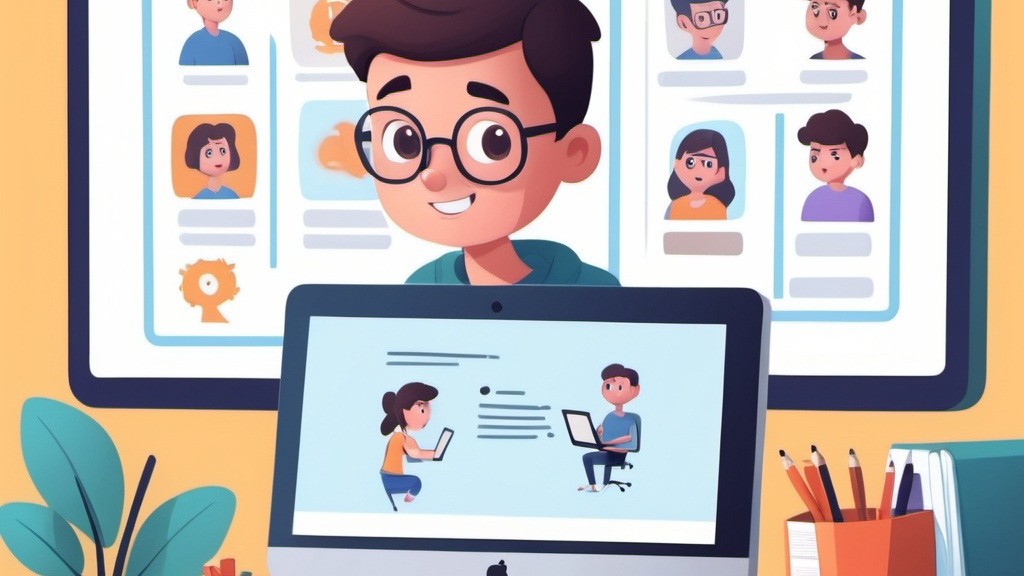In 2020, online education, or EdTech, was one of India’s hottest sectors. We all thought it would change education forever, breaking down barriers and making quality learning accessible to everyone. The idea seemed perfect: top teachers could record lessons once, and millions of students across the country could access them at a zero marginal cost. With smartphones and 4G internet reaching even remote villages, EdTech seemed like a way to create equal opportunities for all.

However, by 2023, things looked very different. EdTech turned into a bubble, bursting due to inflated valuations, reckless spending, and cases of misselling by a few players. EdTech companies that once seemed unstoppable began to struggle, and some even shutting down.
So, why did something with so much promise suddenly face such hard times?
Why Has Online EdTech Struggled?
Let us consider the test prep market as an example. Even though online platforms offer high-quality content and the flexibility to study anytime, parents and students are still choosing physical coaching centres. These offline centres are way more expensive, but they’re still growing, at least in places outside traditional hubs like Kota.
So, what’s going on?
The main reason seems to be accountability—ensuring students stay motivated and on track. Online learning assumed that students would be self-driven, but that hasn’t been the case for most of them. Without the structure of a physical classroom, many students lose focus, don’t finish their courses, or struggle to meet their goals.
Some numbers help illustrate this:
- Udemy reports that about 70% of students don’t complete a course after buying it.
- For free courses on platforms like MOOCs, the dropout rate can be as high as 90-97%.
The flexibility of online classes has become a double-edged sword. While studying at your own pace sounds great, serious students and parents often feel that in-person classes are more effective for keeping students disciplined and focused. Things like attendance tracking, a distraction-free environment, and the physical presence of authority (and even higher fees for that matter) keep students engaged. Parents and students tend to get attracted to class room setup.
This challenge isn’t unique to test prep. Even in upskilling professionals within companies, physical workshops often work better than online courses.
Common Beliefs About EdTech’s Slow Growth – and the Reality
Let’s look at some common perceptions about why EdTech hasn’t grown as quickly as expected and see if they are valid.
- Belief 1: Quality of Online Education Isn’t as Good as In-Person Classes and so it failed. Reality: Not true. Offline centres do have a head start and showcase more success stories (remember large newspaper ads!) compared to online. I think it is more of a cold start problem for online combined with a lack of focus on outcomes (and too much focus on selling). An executive from a popular EdTech platform shared that many of their students clear JEE exams. These are students who could not afford in-person coaching but were self-disciplined enough to succeed. Thus online can produce results provided the accountability challenge can be solved.
- Belief 2: Some Exams Are “Zero-Sum,” So There’s Limited Room for EdTech. Reality: It’s true that exams like NEET, UPSC, and banking exams have limited seats (e.g. NEET invites 40 applicants for 1 medical seat), so only a certain number of students succeed each year. But this is a limitation of the exams themselves, not the learning method. Offline coaching centres have been thriving for years, despite the same limitations.
- Belief 3: EdTech Is Too Fragmented to Be Dominated by a Few Big Players. Reality: Fragmentation (lots of small players) makes sense for niche subjects (e.g. Learning origami online), but not for broad areas like K-12 and test prep. These topics have standard content, and online platforms could theoretically serve large audiences without running into limits on scale.
- Belief 4: Online Learning Misses Out on Individual Attention and Peer Interaction. Reality: While in-person classes do provide peer interaction, they are often crowded, sometimes accommodating even 300 students in a single classroom. So, it’s unlikely that students get much individual attention in offline centres either. Peer interaction happens purely due to the initiative and interest a student takes (some do, many don’t) and is not a default feature of offline centres.
Way Forward
Despite these challenges, I still believe EdTech has a great future. A good analogy to this situation is the early days of online shopping. In the early 2010s, many people didn’t trust buying clothes online because they were worried about fit, returns, and fraud. But over time, as platforms improved, more people adopted them primarily due to superior selection and convenience. I believe EdTech could reach a similar level of acceptance once it achieves a critical mass of success stories and finds effective ways to address the accountability challenge. Some platforms are experimenting with gamification techniques to keep learners engaged and focused. Cohort-Based Courses (CBCs) are also reportedly effective in some areas for creating accountability among learners.
Another implication of the above is that EdTech startups that claim to be AI first would make a difference only if they can solve the accountability challenge. Personalized AI tutors (e.g. Khanmigo) have great potential but they can make a huge difference only if they can get the learners’ attention.
Summary
EdTech may be facing some serious hurdles, but it’s far from over. Like e-commerce, which overcame its initial struggles to become widely accepted, EdTech has the potential to do the same. If the industry can address learners’ needs better, it could truly transform access to education in India.
